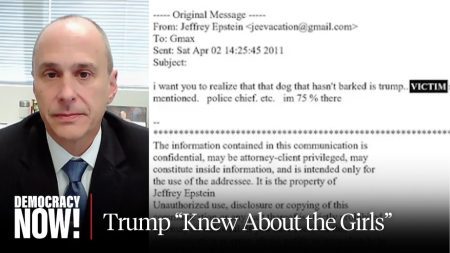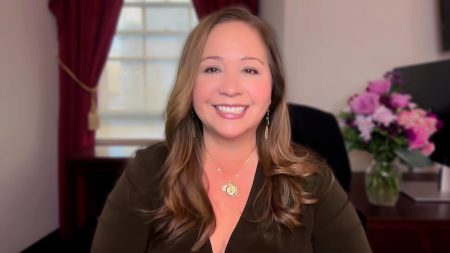What’s Next for the YMI?

|
| Asheville native Alfred Whitesides, a retired banker, addresses the YMI Board and approximately 130 concerned community members about the importance of preserving the legacy and integrity of the YMI Cultural Center. Photos: Renato Rotolo/The Urban News |
Public Demands Answers, Takes Action
Late in March an op-ed appeared in the Asheville Citizen-Times calling on the board of the YMI Cultural center to resign. The guest columnist was Al Whitesides, who retired after a 40-year career as an Asheville banker and a life-long supporter of the YMI.
Two days later, a long-awaited Annual Meeting was held in the gallery of the historic YMI building, where Whitesides was joined by more than 130 concerned and frustrated citizens in repeating his demand.

|
| Community members wait in line for their chance to speak on issues regarding the YMI. Photo: Renato Rotolo/The Urban News |
At the meeting Whitesides said, “When you know the historical facts of the YMI, this institution has a legacy in shaping the lives of many people in our community for over 100 years. The YMI offered educational, life enrichment and cultural programing, whereby people went on to become doctors, lawyers, educators, nurses, business professionals, and even professional athletes,” said Whitesides.
“What has happened to the YMI is the result of mismanagement and the lack of community input. We have professional people within this audience who have the working knowledge to bring this institution back to its rightful status, and to make sure the legacy of community and inclusion is part of the bigger vision.”

|
| Concerned and frustrated community members seek answers. Photo: Renato Rotolo/The Urban News |
Many in attendance are members of the YMI – or were, until they tried to renew during the past six months and were told that the organization was “not accepting new memberships at this time;” one attendee sent in his check in November, and it still has not been deposited. Others were former members, interested citizens, and even relatives of the initial founders of the YMI who voiced the oft-repeated concern that the institution was on the verge of dissolution: that, as some suggested, it would default on its mortgage and “the building would be sold on the courthouse steps.”
Marvin Chambers said, “YMI is and has been the cornerstone of the black community for more years than I can remember. There is a misconception that led people to believe that the native African American community of Asheville is uneducated, lacks vision [and] discipline, and are all lazy, which is far from being true.
“What IS true is that we have been disenfranchised through the urban-renewal process. For us to lose this important icon would be a travesty that can never be replaced.” He continued, “It is incumbent upon the Asheville community (particularly the African American community) to put forth whatever efforts are necessary to ensure that this does not happen again. If it means complete reorganization to enhance the proper management and the mission of this legendary facility – then so be it,” concluded Chambers.

|
| Monique Taylor, Treasurer of the YMI Board listens to questions from the audience. Bill Mance, moderator, and Sharon West, Vice Chair of YMI, look on. Photos: Renato Rotolo/The Urban News |
Community calls for information…
That annual meeting – the first meeting that was open to the public in years – was the beginning of the latest chapter in the long saga of the historic institution. The meeting was presided over not by the chairman of the board, architect Richard Fort, but by the vice-chair, Sharon West, reportedly at the urging of the Advisory Committee.
Supported by YMI Treasurer Monique Taylor, Ms. West presented a brief overview of the YMICC’s finances for the 2010-11 fiscal year. During her presentation, no mention was made of the half-million-dollar mortgage on the building, nor monthly payments that are apparently higher than the monthly income. Many questions about the disappearance of funds from the 2011 Goombay festival also went unanswered.
Nor did anyone explain how the YMI plans to increase income, given that many in attendance spoke about numerous ways they could help, and even volunteer their services. Also, given that in the past two years the board has removed the “YMICC” identifying canvas marquee from the front door and historic drug store; emptied the art galleries; more than tripled the rent for one existing tenant, driving them out; dismissed all its staff except the part-time caretaker; and kept the building locked up and virtually inaccessible to the public, many have come to believe that the YMI is being privatized.
In fact, according to those who attended the meeting, there was no indication from the board of any specific plans for generating income during the coming year, other than vague statements about future “public events” and “fundraising activities.”
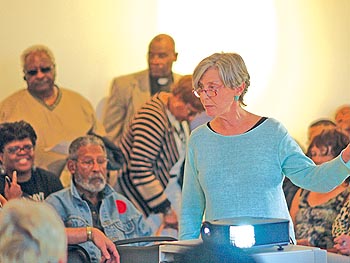
|
| Carol Rogoff Hallstrom questions the YMI Board regarding finances. Photo: Renato Rotolo/The Urban News |
Questions but no answers…
As the public meeting progressed, the board allowed for comments but no discussion or questions and answers; in response to repeated calls for specific information, they remained stoic and silent.
“My concern was, and continues to be, the unwillingness of the board to provide complete and accurate documentation of the financial status of the YMI. And, without that transparency of information the community has no way of determining how it can restore the YMI to its rightful place in the community; I am asking that you share that information,” community member Carol Rogoff Hallstrom said.
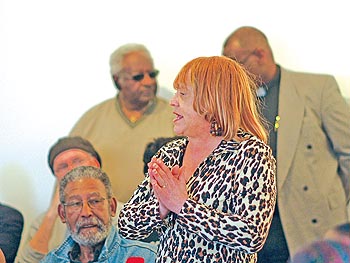
|
| Oralene Simmons asks for clarification about programming for the YMI. Photo: Renato Rotolo/The Urban News |
The specifics demanded by those present were actual financial statements, auditors’ reviews, and tax filings (nonprofits don’t pay taxes, but must file Form 990 returns each year); minutes of both regular monthly board meetings and special meetings of the board, as well as previous annual meetings; and information regarding changes made to the bylaws that removed the right of members to vote on board appointments.
That latter change, from a member-voting board to a self-perpetuating board, was among the strongest points of contention among several speakers and attendees. Without the minutes of every meeting for many years in the past, it is impossible for members to discover when their voting rights were taken away from them. Without tax filings and actual audited financial statements from each year, they cannot determine the actual financial condition of the organization.

|
| The historic YMI building. Photo: Renato Rotolo |
History
The YMI Cultural Center began as the Young Men’s Institute more than a century ago, and it gained its first independence when local black businessmen pooled their money and took out a loan to “buy” the building from George Vanderbilt. After a generation, and beset by the Great Depression and World War II, the Institute was sold to the YMCA, which operated it from 1945 through the late 1970s. At that point the building was in such serious need of repair that it was condemned; to save it, a coalition of churches and community leaders established the nonprofit YMI Cultural Center in 1980.
During the next twenty years strong leadership from board and staff established it as an important downtown institution, brought it into partnership with Pack Place.
Believed to be the oldest continuing black history and culture center in the country, the YMICC was dedicated to preserving African American culture in Asheville and Western North Carolina through education, exhibits, and programming. It is the possible loss of that mission – the preservation of a culture and its history – that informed the anger and determination of those hoping to remove the current board.
Without education programs, a generation of youth will be deprived of knowing about their forebears and their community’s past; without exhibits, valuable artworks and cultural artifacts will gather dust, deteriorate, or be lost; without programming that brings the public inside the historic building to participate in maintaining and furthering a community’s soul and spirit, the YMI as an institution will lose touch with the people it serves and lose access to the revenue it needs to rebuild.
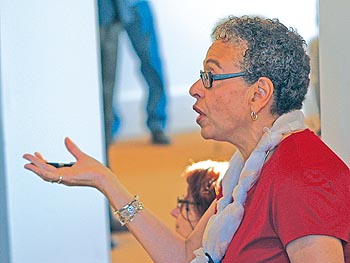
|
| Jackie Simms expresses concern about the future of the organization after the board more than tripled tripled the Ethical Society’s rent. |
Another community member summed the meeting up this way:
“It is my opinion there’s something very sinister about this whole piece, and part of a bigger picture,” says Robert Grant. “When you can’t get specific answers to questions; when people remain mute or quiet, or can’t speak to purpose, and don’t supply you with answers – you have a tendency to believe there’s a cover-up going on. Is another urban renewal process in the making, taking the last stronghold of the local African American community?
“Why,” he asked, “would you take the awnings off the building? Why is the building closed to foot traffic? Why hasn’t funding been generated consistently for this organization – which is the life’s-blood for any organization? Why haven’t volunteers been contacted (and there are many who can volunteer) to man the phones, to write grants, to do programming, or to help with strategic planning – and speak to visitors about the legacy of this building? Why hasn’t the community been called upon? Why is there nothing going on in the facility, except an occasional social event? Why is membership obscure, and programming shut down? Why?” said Grant.
“My heart of hearts tells me some thing, or some ‘bodies’ don’t want the YMI to survive as an African American legacy for this community. This is what happened when past urban renewals slapped us in the face with the unexpected and we were blind-sided by that process, and you’ll be blind-sided by this one too! Think about it.” he said. “Somebody needs to prove that I’m wrong!” mused Grant. He concluded by saying, “If it walks like a duck, looks like a duck, and quacks like a duck, one would conclude – it’s a duck – right?”
The community that has long supported and relied on the YMI as its own center of culture can only hope that Mr. Grant is wrong – and work to make it so.






